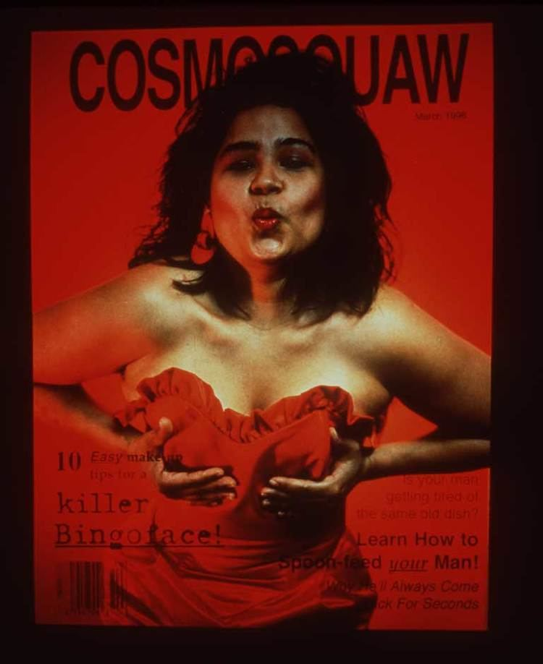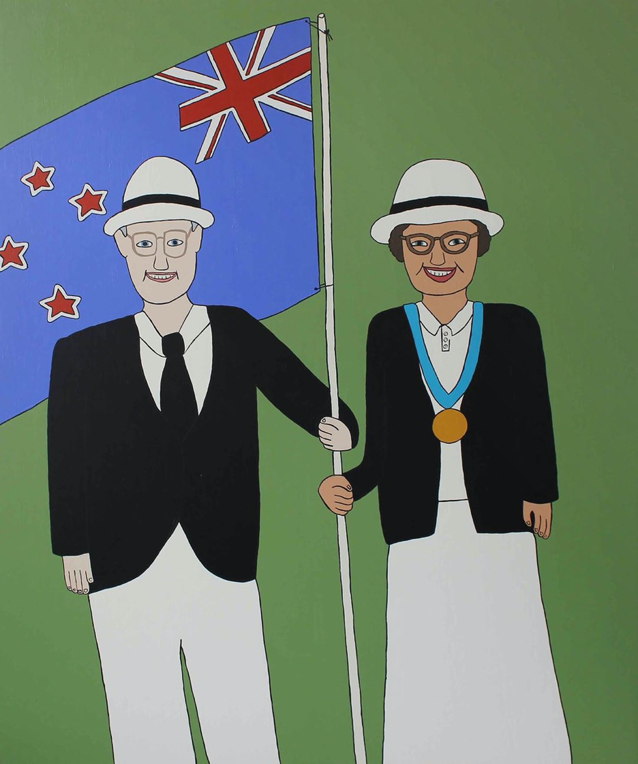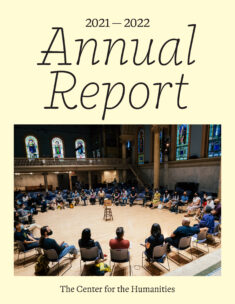About the exhibition
As political and activist movements led by Indigenous peoples around the world gain visibility, and as art historians discuss the implications of decolonizing the field through non-Western epistemologies and cosmovisions, it is fundamental that scholars and cultural institutions more actively engage with the work and vision of Indigenous practitioners. In fact, issues such as sustainability, sovereignty, colonialism, assimilation, racism, and institutional biases, all of which have gained traction in recent years, have been intrinsic to the work of generations of Indigenous artists.
This series of conversations sought to illuminate the complex and diverse practices of Indigenous artists in Latin America, North America, and Oceania, hoping to destabilize homogenizing definitions and narratives about contemporary Indigenous art. Speaking from different geographies, nationalities, generations, sociopolitical contexts and standpoints, the three artists featured in these presentations introduce the public to their careers, oeuvres, challenges, and aspirations.
María Beatriz H. Carrión took part in the Decolonizing Curatorial Practice Mellon Seminar in Art History co-taught in Spring 2020 by James Gallery Curator Katherine Carl, PhD and Professor of Art History Claire Bishop and was selected for the James Gallery Mellon Fellowship in Global Art for the year 2020-21.
In fall 2020, Art History PhD student María Beatriz H. Carrión chose three Indigenous artists whose work exemplified these concerns and in the spring conducted interviews via zoom. The project transcripts and video excerpts are being presented publicly on the gallery website.
Amaru Cholango, Thou Shall Have Other Gods before Me, Mixed Media, Chapel of Our Lady of Angels, Quito, 2011. Image courtesy of Rodolfo Kronfle Chambers.
Amaru Cholango, Saramama/MON 810, genetically modified corn; and Amaru Cholango, Multiculturalism, used clothes, Museo de la Ciudad Quito, 2011. Image courtesy of Rodolfo Kronfle Chambers.
Amaru Cholango (Kichwa) is a contemporary artist based in Ecuador. Born in the Andes and having taught Mathematics and Geology at the Central University of Ecuador in Quito, Cholango began his journey into the art world in London and Paris. His interdisciplinary and primarily conceptual work consists not only of installations, video-installations, photography, objects, and performance, but also painting, drawing, and poetry. His art builds a bridge between the ancient Andean Cosmogony and contemporary art. His work has been presented at Venice Biennale (1997), Documenta (1997), and the Sao Paulo Biennale (2003). He has also taught at the European Academy for Plastic Arts and at the University of Trier, Germany.

Lori Blondeau, COSMOSXQUAW (detail), 1996, duratrans in lightbox, 10.6 x 8.3 in. John Cook Collections. Photo courtesy of Bradlee Laroque.
Lori Blondeau (Cree/Saulteaux/Métis) is an interdisciplinary artist from Canada who works primarily in performance and photography. She obtained her MFA from the University of Saskatchewan and is an Assistant Professor at the University of Manitoba’s School of Art. Her work critically examines both the representation of First Nations women in popular culture and media, and also considers issues of family, history, and colonialism. Blondeau has exhibited in and performed at a wide range of cultural venues, including the Banff Centre, the Mendel Art Gallery, Open Space, and FOFA. Her Requickening project, which she developed alongside artist Shelley Niro, was presented at the Venice Biennale in 2007. In addition to her artistic production, Blondeau was a founding member and director of TRIBE: A Centre for the Evolving Aboriginal Media, Visual and Performing Arts Inc.

Ayesha Green, Nana and Grandad, 1994 (New Zealand Gothic), 2016, acrylic on ply. 57.3 x 48.1 in. Courtesy of: Jhana Millers.
Ayesha Green (Māori, Kai Tahu, Ngāti Kahungunu) is an artist based in Aotearoa, New Zealand. She obtained a Master’s in Fine Arts at the Elam School of Fine Arts and a graduate diploma in museums and cultural heritage at the University of Auckland. Her work, primarily pictorial, explores questions of identity, family relations, history, and everyday life. Green received The Arts Foundation Springboard Award in 2020, and she won the National Contemporary Art Award in 2019. Her work has been exhibited at the Auckland Art Gallery, the Dunedin Public Art Gallery, the Dowse Art Museum, and Blue Oyster Art Project Space, among other cultural and art venues.

